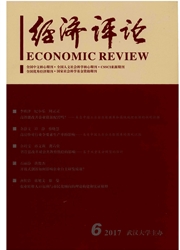

 中文摘要:
中文摘要:
国民经济是由各个产业组成的,经济波动也就是各个产业波动的综合结果,它综合了各个产业的自身波动特征和产业份额的影响。本文采用实际份额法,从中国经济波动的冲击源中分解出产业结构冲击,并且利用1952-2008年的时间序列数据进行测算。研究表明,中国经济受到产业结构不同程度的正向或负向冲击,宏观经济因此呈现出有规律性的扩张与收缩。从具体的影响程度看,中国经济波动中大约有15%~20%的部分应该归因于产业结构的冲击。本文的研究结果也意味着,宏观经济政策在优化产业结构时,须考虑产业结构调整对宏观经济稳定所形成的冲击,产业结构调整政策不必是一蹴而就的。
 英文摘要:
英文摘要:
National Economy is composed of various industries, and economic fluctuation is the combined result of volatilities in various industries, which combines the characteristics of each industry’s self-volatility and industry structure. This paper uses the real share method to separate the influence of industrial structure from the volatility of the China’s economy, and with 1952-2008 time series data to calculate. The results show that the industry structure is the reason of China’s economic fluctuation. From the specific impact, about 15% to 20% of China’s economic fluctuation is due to industry structure. The results of this paper also mean that macroeconomic policy must take into account the macroeconomic stability when adjusting industry structure, and the goal of industry restructuring would not be achieved overnight.
 同期刊论文项目
同期刊论文项目
 同项目期刊论文
同项目期刊论文
 期刊信息
期刊信息
